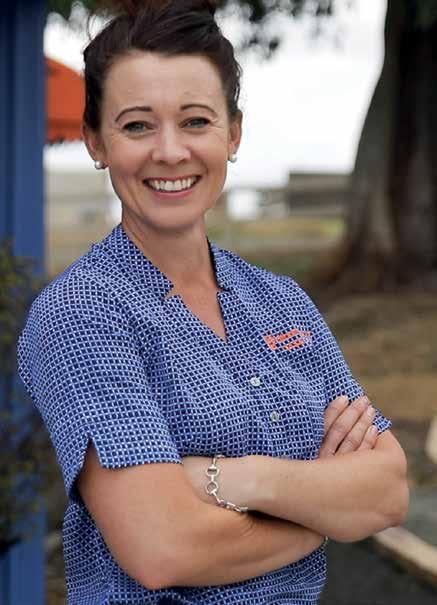
4 minute read
ELECTRONIC LOCKS
Electronic locks – emerging technology
The self storage industry in Australia and New Zealand is on the cusp of a new wave of technology with the introduction of electronic locks into the industry.
WHAT IS AN ELECTRONIC LOCK?
An electronic lock is an alternative to traditional padlocks and keys that offers keyless entry into storage units. It is a locking device which operates using an electrical current which can be unlocked or locked using Bluetooth technology via an app on a mobile phone. It can also share Bluetooth (mobile) keys.
INTEGRATION
Electronic locks can be fully integrated with industry software specialists like Storman and Sitelink and access gate control software. They enable full audit trails of access to units and can be set up with integrations to lock out a storer automatically when they are overdue with their account.
STORAGE AGREEMENTS
The SSAA has released a slightly amended version of the Australian storage agreements to cater for this emerging technology. In August 2020 an updated version of the Standard, Managed and Mobile Agreements were released allowing for the use of both electronic and traditional locks within the industry.
Members who are seeking to retrofit or undertake new builds utilising this emerging technology in Australia should commence using Version 2 of these agreements. Updated 2020 New Zealand agreements are due for release later this year and will include wording to cater for electronic locks.
The product settings selected by a Facility implementing electronic locks will determine which of the Standard and Managed Agreements will be most likely to apply to storage services where electronic lock products are used to secure the space. GENERAL INFORMATION
The various systems allow storers to have fully audited ‘digital key sharing’ records. Storers can give access or permission by sharing digital keys. All access to and from any unit and the method of entry is all recorded in a log.
The SSAA has researched the functionality, adaptability and suitability to the storage industry of this emerging technology and has reviewed the two products available in the market, Noke Smart Entry and KAS.
Electronic locks are a new development and their use does create questions as to whether the relationship between storers and facilities is best regulated by a Standard Agreement or a Managed Agreement. Ultimately, this will be determined by each individual facility’s use of the locking system and whether that use more closely resembles the traditional Standard Agreement relationship or the traditional Managed Agreement relationship.
SSAA research reveals that both products can be utilised and adapted to suit industry model practices. Members who are seeking to install electronic lock technology are encouraged to liaise with their product providers to modify the settings of the products they are using. This will ensure that functionality and access levels reflect the service the Member intends to offer. For example, if a Member wants to avoid the increased responsibility that comes with offering Managed Storage services, the Member will need to ensure their electronic lock settings are not the equivalent of ‘keeping keys’. Commonly, electronic locking products offer settings that do provide Members with the ability to access the space, which could be considered the equivalent of ‘keeping keys’.
Members could consider adopting the following settings to reduce the risk that they are deemed to have ‘kept’ keys: l The product provider keeps a tamper-proof record of every time an electronic lock is opened. l The storer receives a notification every time the electronic lock on their space is opened. l The storer and the product provider are the only people who may open the electronic lock. l The facility would only be able to request the product provider open the electronic lock in the limited circumstances as described below.
Limited circumstances would include where a facility is required to ‘force’ or ‘break’ a lock under the Standard Agreement – such as in an emergency or after the storer is in default for more than 42 days.
Alternatively, a facility could have the ability to open an electronic lock (only in the limited circumstances described above), but this access should be password protected and that password should be available to limited members of facility staff. Facilities should seriously consider whether it needs this functionality, as this would be more likely to suggest that the facility is ‘keeping keys’ than if the facility did not have the ability to open the electronic locks itself.
As this is a new product in the self storage industry, it’s not certain that taking any or all of these measures will guarantee that a member will not be ‘keeping keys’. Until the use of electronic locks in the storage industry is legally tested, we cannot say with certainty that using electronic locks will not amount to ‘keeping keys’, but implementing the settings suggested should go some way to reduce the likelihood that they have done so.
Caution should be exercised, as ‘keeping keys’ will likely create a bailment relationship between the facility and the storer, as opposed to a mere licence for the storer to use the space. The facility will, therefore, have a greater responsibility for the goods. l










